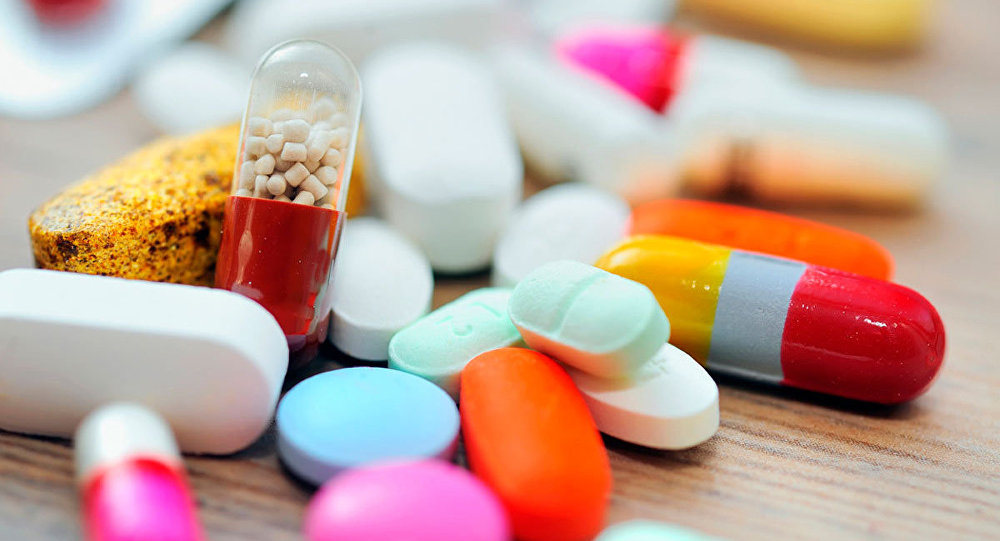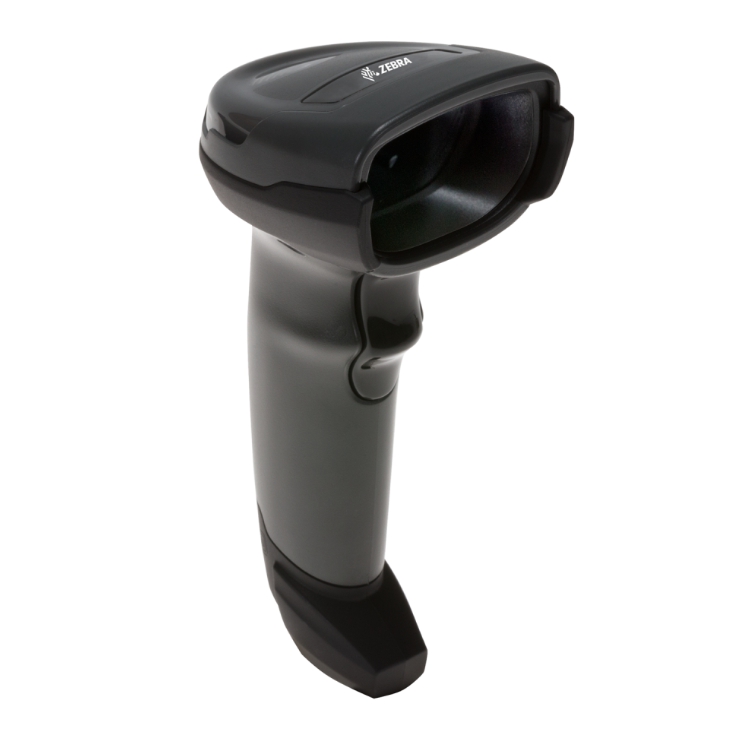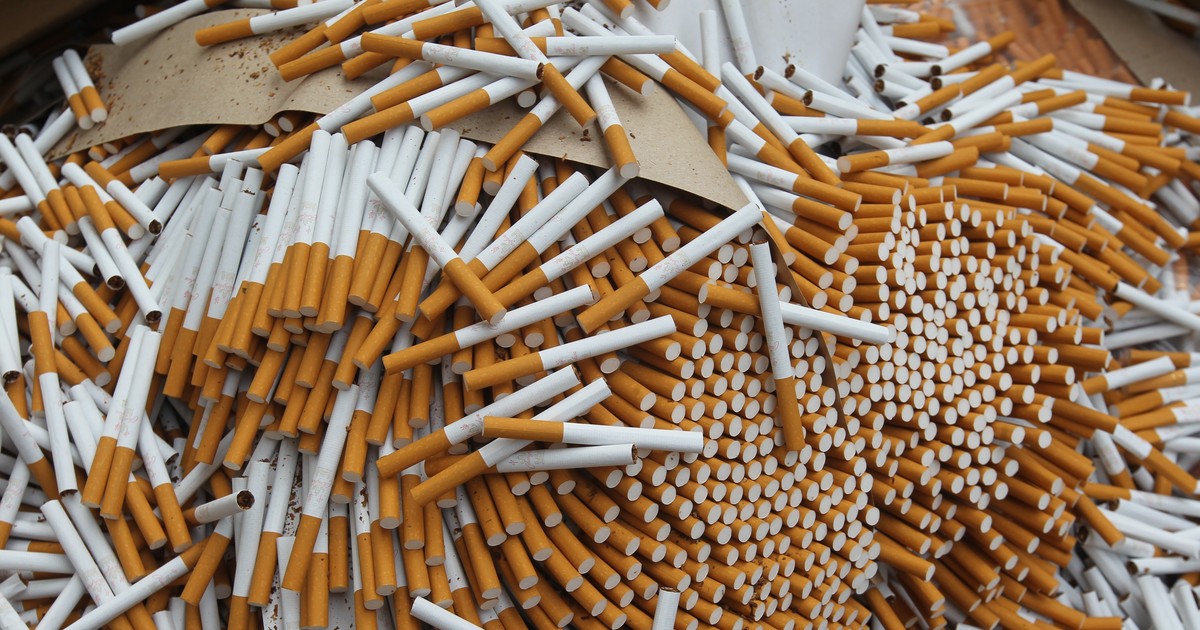And we count you. Universal labeling of goods is coming in Russia

The system of universal labeling of goods will soon work in Russia. Until 2024, it will have to cover all the major groups of industrial products: from clothing and footwear to food. Now the Ministry of Industry and Trade and the Ministry of Economic Development are working on the creation of a global system.
About global labeling of goods so far little is known: its idea is in the process of development. Only recently, the Ministry of Industry and Trade has compiled a list of products subject to mandatory labeling. The ministry sent the corresponding list to the government at the end of March, Vedomosti reports . The list contains a variety of goods: perfumes, tires, blouses and coats, baby food, rice, pasta, tea, coffee, canned food, meat and fish products, beer, juices, mineral water, household chemicals, bed linen and dairy products. The option sent to the government is not final and can be improved.
')
In the meantime, total labeling is only approved by the government, consider the labeling system for certain categories of goods, which are known many times more.
Marking alcohol and fur coats
The beginning of the universal labeling of goods was laid back in 2005 by the Unified State Automated Information System (GAIS), designed to control the volume of production and turnover of ethyl alcohol, alcohol and alcohol-containing products. However, in its current form, it earned only 11 years later - from January 1, 2016.
As part of the Unified State Automated Information System, when selling a bottle of alcohol, its excise stamp is scanned. The information contained in it online is transmitted to Rosalkogolregulirovanie special program - universal transport module (UTM). Scan the same excise stamp can not be: the seller will receive a fine.
The state receives information about the entire chain that the bottle passed: from the manufacturer to the final customer. Thus, the latter are insured against buying counterfeit goods.
In addition to the labeling of alcohol, from 2016 in Russia started the mandatory labeling of fur products. All fur products are marked with control identification marks (Kiz), which contain a two-dimensional bar code and a radio frequency chip (RFID). Each key has a unique serial number, which is stored in a single information database on the servers of the Federal Tax Service. This eliminates the possibility of forgery and reuse of marks. When selling a fur product with a Keith, the seller commits the transaction in a personal account on the information resource marking.
The introduced marking of fur coats showed that in Russia the shadow market of fur products was twice as large as the numbers that the sellers reported to the state.
Drug labeling

From January 1, 2020, labeling of all drugs will become mandatory in Russia. The State Duma adopted the corresponding bill at the end of December 2017. For certain categories of drugs, labeling may be introduced even before 2020: specific deadlines are left to the discretion of the government.
What it looks like. In order to identify all possible “pitfalls” prior to the start of drug labeling in Russia, a similar pilot project has been launched. Within its framework, the drugs are labeled DataMatrix. This is a two-dimensional matrix barcode used to encode text. Labels will be applied to the packaging of the drug - such coding will cost the manufacturer less than the introduction of radio frequency chips.

Who will be affected. All manufacturers and sellers of drugs. Moreover, a number of drug manufacturers in November 2017 warned that total labeling could lead to an increase in the cost of cheap drugs and, as a result, to “wash out” them from the market.
In November 2017, the head of Roszdravravnadzor, Mikhail Murashko, proposed introducing marking in stages. According to him, by March 31, 2018 it was necessary to mark all the drugs of the Seven Nosologies program, by June 30 - essential and most important drugs (VED) worth more than 500 rubles, by September 30 - all vital and essential drugs worth more than 100 rubles.
As the Minister of Industry and Trade Denis Manturov noted , the drug labeling experiment has already helped to curb a number of crimes for the distribution of poor-quality drugs.
More than 150 manufacturers and 1600 Russian and foreign suppliers have already joined the labeling of drugs. Mandatory labeling of drugs will be after the installation at each pharmaceutical company special two-dimensional scanners . The Minister stressed that the government will ensure that the introduction of identification marks does not affect the increase in the final cost of goods.
Drug manufacturers will inevitably incur costs. For example, experts from Kurgan Sintez believe that the direct costs of equipping a single line with marking equipment and related operations can range from 7 to 12 million rubles, and the total investment in the project will exceed 200 million rubles. However, the introduction of labeling of drugs will help to remove from the sale of low-quality products.
Who regulates. The Single Operator of the Product Marking and Tracking System is the Center for the Development of Advanced Technologies (TSRPT), created on the basis of public-private partnership, owned by Rostec, Peter-service by Alisher Usmanov and Elvis + Group by Alexander Galitsky. The cost of the drug labeling equipment developed by the Center of Central Regional Development Program varies from 3.5 to 9.5 million rubles, depending on the configuration.
Pilot recommendation. Choosing a two-dimensional hand-held scanner in a pharmacy, do not spend on the purchase of a very expensive device. Such models are relevant only in stores with high cross, where you can not do without a quick scan. Instead, find out how high the reading quality of the model of interest is: it should be able to read even damaged DataMatrix tags. Also, consider whether you need a wired or wireless scanner. In principle, if the cash register system unit is located next to the device, then the wired model will be more than enough. We recommend to pay attention to the two-dimensional handheld scanners Zebra DS2208, DS4308-HD, Honeywell Voyager 1450G2D, Datalogic GRYPHON QD2400.

Labeling of tobacco products

On January 15 of this year, a pilot project for marking tobacco products started in Russia. It will last until December 31, 2018, according to a resolution posted on the website of the Cabinet of Ministers “On the experiment on the labeling of tobacco products with means of identification and monitoring the turnover of tobacco products”.
According to officials, the electronic labeling of cigarettes should confirm the authenticity of the goods and counteract the illegal importation, production and trafficking of tobacco products, including counterfeit ones. “[Marking] is a tool to ensure the functioning of a more transparent market; monitoring the movement of products will allow us to respond more quickly to the use of illegal schemes for importing and trading goods, not paying necessary fees and charges, and will also allow for more precise control in the future, reducing the total number of control measures ", - explained RBC representative of the First Deputy Prime Minister Igor Shuvalov.
What it looks like. During the production experiment, a digital DataMatrix code is applied to the pack and each block of cigarettes. It will contain information that can confirm the authenticity of products: the name of the brand of cigarettes, the date, place and time of their production. Further, according to primary documents, an automated control of the movement of a bar code and withdrawal from circulation is carried out on the basis of data obtained from cash registers.
Who will be affected. 90% of manufacturers on the market have already voluntarily connected to the system, labeling products labeled DataMatrix. Such large retailers as X5 Retail Group (Pyaterochka, Perekrestok, Karusel), and Dixie decided to take part in the experiment. By the way, it was in one of the Perekrestok supermarkets on April 4 that the first packs of cigarettes with special markings were sold . Importers of tobacco products will connect to the experiment from July 1, 2018.
As the head of the TabakProm Association Andrei Mezhonov said: “According to the international agency Nielsen, at the end of 2017 we had a little more than 4% of illegal tobacco products in Russia, with the majority of these products being supplied to the Russian Federation from the EEU member countries. We hope that the introduction of labeling will help whitewash the market. The initiator of this experiment was the tobacco industry. ”
“I think that all companies that are engaged in production will agree that labeling is a very important element of protection,” said Alexei Ordzhonikidze, director for regulation of production and turnover of tobacco products in Russia, reminding that only the company he represents. over the past year has become 3.5 times more suffer from illegal traffic. Note that, according to the research company TNS, the share of illegal tobacco products in the total volume at the end of the first half of 2017 was 4.6%, an increase by four times compared with the figure for the whole of 2016.
Who regulates. The functions of the operator of the information system in the framework of the experiment will be performed "free of charge" LLC "Operator-TSRPT". This LLC is a subsidiary of the Center for Development of Advanced Technologies. According to SPARK-Interfax, in the Central Regional Park 25% belongs to the Avtomatika Concern (included in Rostec), 50% is owned by Peter-Service JSC (supplier of MegaFon billing systems, USM Holdings billionaire Alisher Usmanov is the main owner) and 25% - the company Elvis Plus Group, the founder of the Almaz Capital Partners investment fund Alexander Galitsky.
Marking shoes

On June 1, 2018, an experiment on labeling shoes starts in Russia. By the way, this market ranks third in the country after food and drugs.
What it looks like. It is not known what labeling will be used and who will produce it. However, experts are inclined to the version that labeling shoes will become all the same DataMatrix codes.
Who will be affected. Participation in the pilot project will be voluntary for companies. These are manufacturers, importers, and shoe sellers.
According to the owner of the shoe network Zenden (besides the retail chain of the same name, manages stores under the Thomas Munz and Mascotte brands) Andrei Pavlov, the labeling of shoes does not imply complex high-tech tags, so it can be implemented quickly and relatively inexpensively in production. He is confident that his network by June will be ready for the start of the experiment. The project should whitewash the market and oust unscrupulous players, says Pavlov.
Andrey Berezhnoy, owner of a chain of stores and shoe manufacturer Ralf Ringer, agrees with him. According to him, if we are talking about the introduction of special bar codes that can be read on ordinary cash registers, this will not be a problem for organized retail.
If the authorities decide to label their shoes with RFID tags, this will mean that shoe stores will have to buy special equipment for reading. If, however, DataMatrix tags are introduced, then there really will be no problems, because shoe shops are already equipped with two-dimensional hand-held scanners.
Jewelry marking

On June 1, 2018, an experiment will begin in Russia on the marking of precious metals and stones, as well as products made from them. The relevant decree, Russian Prime Minister Dmitry Medvedev signed on March 24.
What it looks like. Earlier it was assumed that a QR code would be placed on the jewelry tags, which would help the buyer to verify their authenticity. And later on the products will nanometka. “The technology has been developed and is already being applied in a number of states - [technology] nanometok, which are applied to the stones. The labels are so small that they do not affect the consumer properties of the stone, they cannot be so [seen without special equipment], but they are readable by machines, ” said Deputy Finance Minister Alexei Moiseev. At the same time, the Ministry of Finance clarified that nanometer marks are an expensive technology, so the ministry plans to introduce it in stages. “At the first stage, we will limit ourselves to applying [marking] on the accompanying tags,” announced Moses.
Who will be affected. The results of the experiment will show whether it is possible to control the turnover of jewels with the help of marking. In total, the list of types of jewelry to be labeled includes 14 commodity nomenclatures (TN VED), including unsorted and industrial diamonds, rubies, sapphires and emeralds, unwrought silver and gold, monetary gold, raw or platinum powder, jewelry articles and parts thereof of silver and other precious metals.
According to participants in the jewelry market, they support the idea of the government. Valery Morozov, a member of the board of directors of the Moscow Jewelry Factory, noted that the labeling will ensure the transparency of all processes from production to sale, protecting buyers from fraud by unscrupulous sellers. At the same time, he expressed the hope that the introduction of labeling would not require additional large costs from market players.
Who regulates. The experiment will last until November 1. For this period, the Ministry of Finance, the Federal Customs Service, the Federal Tax Service, Rosfinmonitoring, Gokhran of Russia and the Russian State Assay Office are authorized to conduct it.
Before December 1, 2018, the Ministry of Finance should evaluate the results of the experiment and submit a response to the government, which will decide on the effectiveness of the introduction of marking for jewelry.
Unlike tobacco and shoes, Goznak JSC will be the operator and developer of an integrated information system in the field of control over the circulation of jewels. The company itself offered to take on these functions and will implement them free of charge, the resolution says.
In a government decree, Gosznak was instructed to define the requirements for the information system itself and ensure the protection of the data contained therein by April 2. How the product labeling will be implemented will be determined by the Ministry of Finance.
Marking of milk, meat, poultry and fish

Deputy Prime Minister Arkady Dvorkovich at a congress of the National Union of Milk Producers said that the pilot labeling system of drugs can be tested on dairy products. In his opinion, such a system for manufacturers will not become burdensome from a financial point of view, but will prove effective for regulatory authorities.
Moreover, since July of this year, mandatory registration of veterinary accompanying documents in electronic form has been introduced in Russia. For these purposes, the automated information system “Mercury” was specially created. As its creators say , the system is “designed for electronic certification and ensuring traceability of cargoes under state veterinary supervision during their production, circulation and movement across the territory of the Russian Federation in order to create a unified information environment for veterinary medicine and enhance biological and food safety.”
What it looks like. Electronic certificates can be called analogue of electronic labeling. Since the state intends with their help to track the entire chain from production to sale of products. And in the event that on one of the segments of the chain "Mercury" detects a violation, the movement of the goods will be stopped.
Who will be affected. Obligatory registration in the "Mercury" must pass manufacturers and sellers of goods under the supervision of the State Veterinary Control. These are dairies, meat processing plants, poultry farms, seafood producers, as well as logistics companies, retail chains and retailers associated with the sale of goods of animal origin. All of them will have to receive electronic certificates generated in the "Mercury". The lack of a document leads to a fine: it will be from 3,000 rubles, if it is discharged to the driver as an official, or from 10,000 to 20,000 rubles to a legal entity. In the latter case, the suspension can also be a suspension of activity for up to 90 days.
And if retail should not have any special problems with “Mercury” - the accounting and document management of them and so go in electronic form, then with suppliers the situation is more complicated.
So, according to TASS , half of the suppliers of X5 Retail Group are not yet ready to go to work with Mercury from July 1, 2018. “Currently, X5 has about 1.5 thousand suppliers of products subject to veterinary certification from July 1, 2018. Of these, about 50% did not confirm their readiness to work in the federal state information system (FGIS) “Mercury”, or did not take a set of measures to integrate FGIS into their own business processes, "said a company representative. He stressed that among the companies that While they are not ready to switch to this system, almost 35% are in the hundred largest suppliers of X5 Retail.
Who regulates. The Mercury system is under the jurisdiction of the Ministry of Agriculture of the Russian Federation and the Rosselkhoznadzor.
General conclusion
Total and partial markings accurately affect the entire market for the production and sale of goods in our country. And, be sure that no manufacturer or retailer can evade participation in the system.
That is why we can immediately give some advice:
- Get ready for the introduction of labeling systems in your segment in advance. If the government announces the pilot, enter immediately. The faster you feel all the subtleties of the new system, the easier it will be later to adapt to it.
- Prepare the equipment in advance. If the system provides for the introduction of new commercial equipment for you, then look ahead and buy the right one. Alas, you will not “carry it through”: if you need a scanner to read DataMatrix tags, you cannot do without it.
- Be prepared for expenses. Whatever they say in the government, the introduction of any new system incurs costs. This is a software update, equipment fleet, personnel training, technical services. However, as EGAIS and 54-FZ have already shown, gradually such expenses become business investments: the better your store is automated, the more opportunities there are for its development.
So, the total labeling of goods is getting closer. The Pilot will continue to monitor developments and will share relevant information with you.
Source: https://habr.com/ru/post/353344/
All Articles